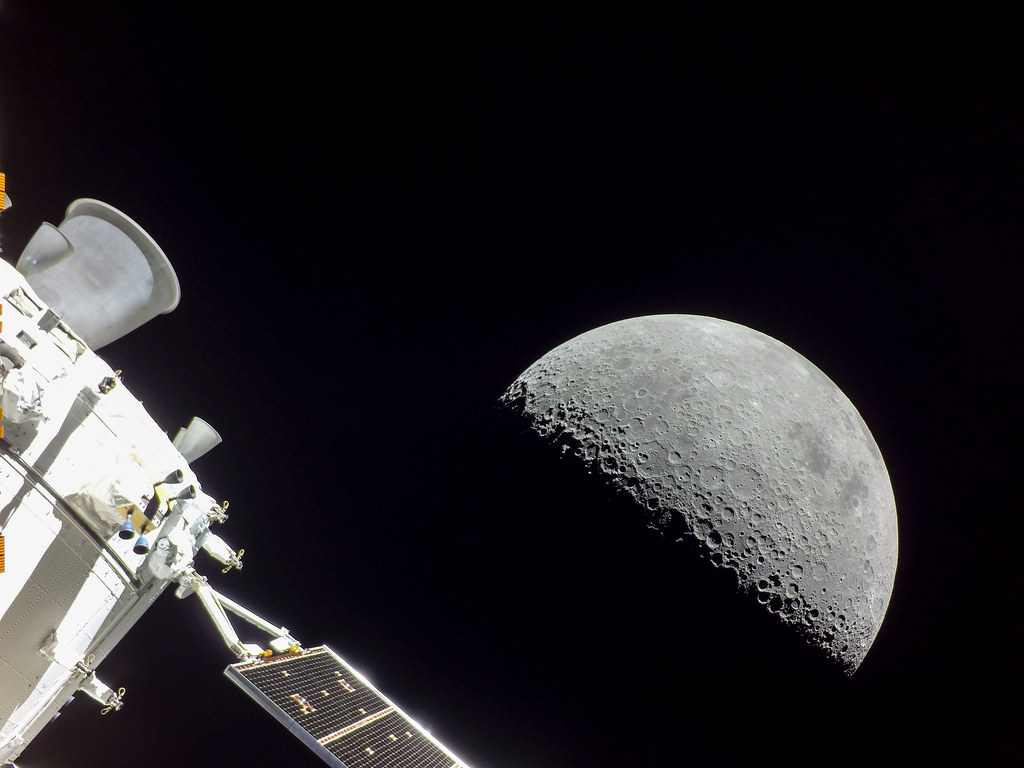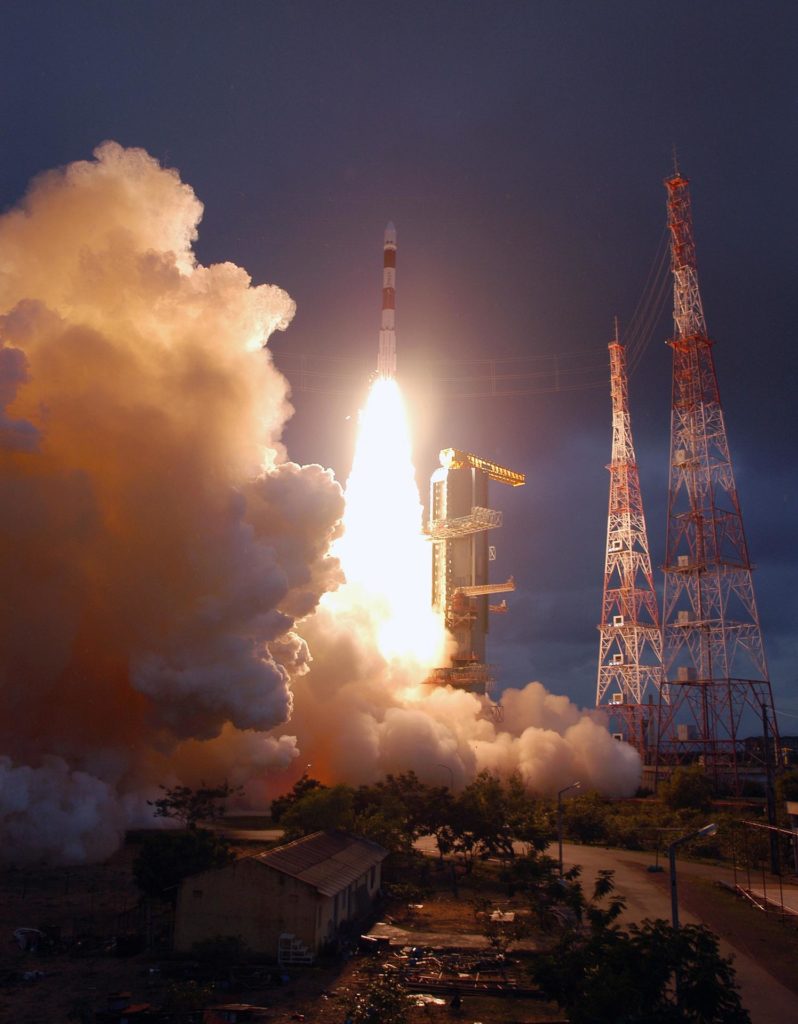Chandrayaan 3: Mission | Objectives | Achievements
Chandrayaan 3 is the third Indian lunar exploration mission under the Indian Space Research Organization’s (ISRO) Chandrayaan Programme. It consists of a lander named Vikram and a rover named Pragyan, similar to those of the Chandrayaan-2 mission.
The mission was launched on 14 July 2023, aboard an LVM3-M4 rocket from the Satish Dhawan Space Centre in Sri Harikota, Andhra Pradesh, India. It entered lunar orbit on 5 August, and the lander touched down in the lunar south pole region on 23 August 2023 at 18:02 IST, making India the fourth country to successfully land on the Moon, and the first to do so near the lunar south pole.
The Main Objectives of Chandrayaan 3:
- To demonstrate safe and soft landing on lunar surface.
- To demonstrate rover roving on the moon.
- To conduct in-situ scientific experiments.
The lander Vikram is equipped with a number of scientific instruments, including a seismometer, a magnetometer, and a thermal mapper. The rover Pragyan is equipped with a panoramic camera, a spectrometer, and a laser altimeter.
The scientific payloads on Chandrayaan 3 will study the lunar surface and atmosphere, and will also look for signs of water ice. The mission is expected to last for one year.

The successful landing of Chandrayaan 3 is a major milestone for the Indian space program. It is a testament to the hard work and dedication of the scientists and engineers at ISRO. The mission will help India to further its understanding of the Moon and will also pave the way for future lunar missions.
Achievements of the Chandrayaan 3 Mission:
India became the fourth country to successfully land on the Moon.
India became the first country to land near the lunar south pole.
The mission successfully deployed the Vikram lander and the Pragyan rover.
The mission collected valuable scientific data about the lunar surface and atmosphere.
Also Read: Reading in Early Childhood Education
The mission paved the way for future lunar missions by India.
The Chandrayaan 3 mission is a major success for the Indian space program. It is a testament to the hard work and dedication of the scientists and engineers at ISRO. The mission will help India to further its understanding of the Moon and will also pave the way for future lunar missions.
Specifications of the Chandrayaan 3 Mission:
Propulsion Module: The propulsion module is the main body of the spacecraft and it is responsible for carrying the lander and rover to the Moon. It has a mass of 2148 kg and it is powered by four liquid-fueled engines.
Lander Module: The lander module is responsible for landing the spacecraft on the Moon. It has a mass of 1726 kg and it is equipped with a variety of scientific instruments, including a seismometer, a magnetometer, and a thermal mapper.
Rover: The rover is a small, mobile vehicle that will explore the lunar surface. It has a mass of 26 kg and it is equipped with a panoramic camera, a spectrometer, and a laser altimeter.
Scientific Payloads: The Chandrayaan 3 mission will carry a variety of scientific payloads, including:
- A seismometer to study the lunar seismic activity.
- A magnetometer to study the lunar magnetic field.
- A thermal mapper to study the lunar surface temperature.
- A panoramic camera to take images of the lunar surface.
- A spectrometer to study the composition of the lunar surface.
- A laser altimeter to measure the height of the lunar surface.
The Chandrayaan 3 mission is expected to last for one year. During this time, the lander and rover will collect valuable scientific data about the lunar surface and atmosphere. The mission will also help India to further its understanding of the Moon and will pave the way for future lunar missions.
Also Read : Top 10 Greatest Man in World?
Here are some additional technical specifications of the Chandrayaan 3 mission:
Launch vehicle: LVM3-M4
Launch mass: 3900 kg
Orbit: Lunar orbit
Landing site: South Pole of the Moon
Mission duration: 1 year
I hope this helps!
Mission Objectives: The main objectives of the Chandrayaan 3 Mission are to:
- Demonstrate safe and soft landing on lunar surface.
- Demonstrate rover roving on the moon.
- Conduct in-situ scientific experiments.
Success Ratio: The Chandrayaan 3 mission was a success. The lander Vikram touched down safely on the lunar surface on 23 August 2023, making India the fourth country to successfully land on the Moon. The rover Pragyan also deployed successfully and began exploring the lunar surface.
The Chandrayaan 3 Benefits are :
The Chandrayaan 3 mission will have a number of benefits, including:
It will help India to further its understanding of the Moon.
It will pave the way for future lunar missions by India.
It will boost India’s technological capabilities and its standing in the global space community.
It will inspire young people in India to take up careers in science and technology.
The Chandrayaan 3 mission is the third lunar exploration mission by the Indian Space Research Organization (ISRO). It is a follow-up to the Chandrayaan-1 and Chandrayaan-2 Missions.
The mission consists of a lander named Vikram and a rover named Pragyan. The lander is responsible for landing the spacecraft on the Moon, while the rover will explore the lunar surface.
The lander Vikram is equipped with a number of scientific instruments, including a seismometer, a magnetometer, and a thermal mapper. The rover Pragyan is equipped with a panoramic camera, a spectrometer, and a laser altimeter.
The Chandrayaan 3 mission was launched on 14 July 2023, aboard an LVM3-M4 rocket from the Satish Dhawan Space Centre in Sriharikota, Andhra Pradesh, India.
It entered lunar orbit on 5 August, and the lander touched down in the lunar south pole region on 23 August 2023 at 18:02 IST.
The mission is expected to last for one year. During this time, the lander and rover will collect valuable scientific data about the lunar surface and atmosphere.
FAQs:
Q.1 What are the main objectives of the Chandrayaan 3 mission?
A.1 The main objectives of the Chandrayaan 3 mission are to:
* Demonstrate safe and soft landing on lunar surface.
* Demonstrate rover roving on the moon.
* Conduct in-situ scientific experiments.
Q.2 What are the scientific payloads on the Chandrayaan 3 mission?
A.2 The Chandrayaan 3 mission will carry a variety of scientific payloads, including:
* A seismometer to study the lunar seismic activity.
* A magnetometer to study the lunar magnetic field.
* A thermal mapper to study the lunar surface temperature.
* A panoramic camera to take images of the lunar surface.
* A spectrometer to study the composition of the lunar surface.
* A laser altimeter to measure the height of the lunar surface.
What is the launch vehicle for the Chandrayaan 3 mission?
The launch vehicle for the Chandrayaan 3 mission is the LVM3-M4. It is a four-stage launch vehicle that is capable of placing a payload of up to 3900 kg into lunar orbit.
Q.3 What is the orbit of the Chandrayaan 3 mission?
A.3 The Chandrayaan 3 mission will be in a lunar orbit. This means that it will orbit the Moon.
Q.4 Where will the Chandrayaan 3 mission land?
A.4 The Chandrayaan 3 mission will land in the lunar south pole region. This region is of interest to scientists because it is thought to be rich in water ice.
Q.5 How long will the Chandrayaan 3 mission last?
A.5 The Chandrayaan 3 mission is expected to last for one year. During this time, the lander and rover will collect valuable scientific data about the lunar surface and atmosphere.
Q.6 What are the challenges of the Chandrayaan 3 mission?
A.6 The Chandrayaan 3 mission faces a number of challenges, including:
* The landing on the lunar surface is a very complex and difficult maneuver.
* The rover will need to operate in a harsh environment with extreme temperatures and radiation levels.
* The scientific instruments on the lander and rover will need to be able to withstand the harsh conditions on the Moon.
Q.7 What are the benefits of the Chandrayaan 3 mission?
A.7 The Chandrayaan 3 mission will have a number of benefits, including:
* It will help India to further its understanding of the Moon.
* It will pave the way for future lunar missions by India.
* It will boost India’s technological capabilities and its standing in the global space community.
* It will inspire young people in India to take up careers in science and technology.
